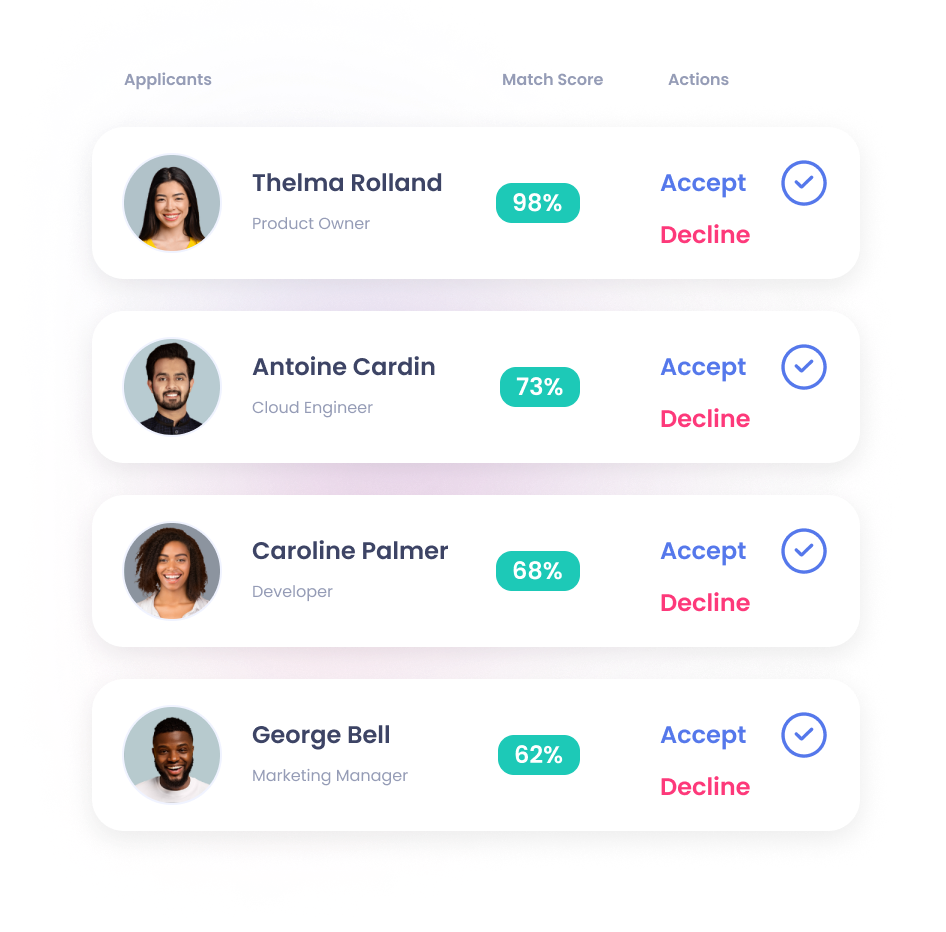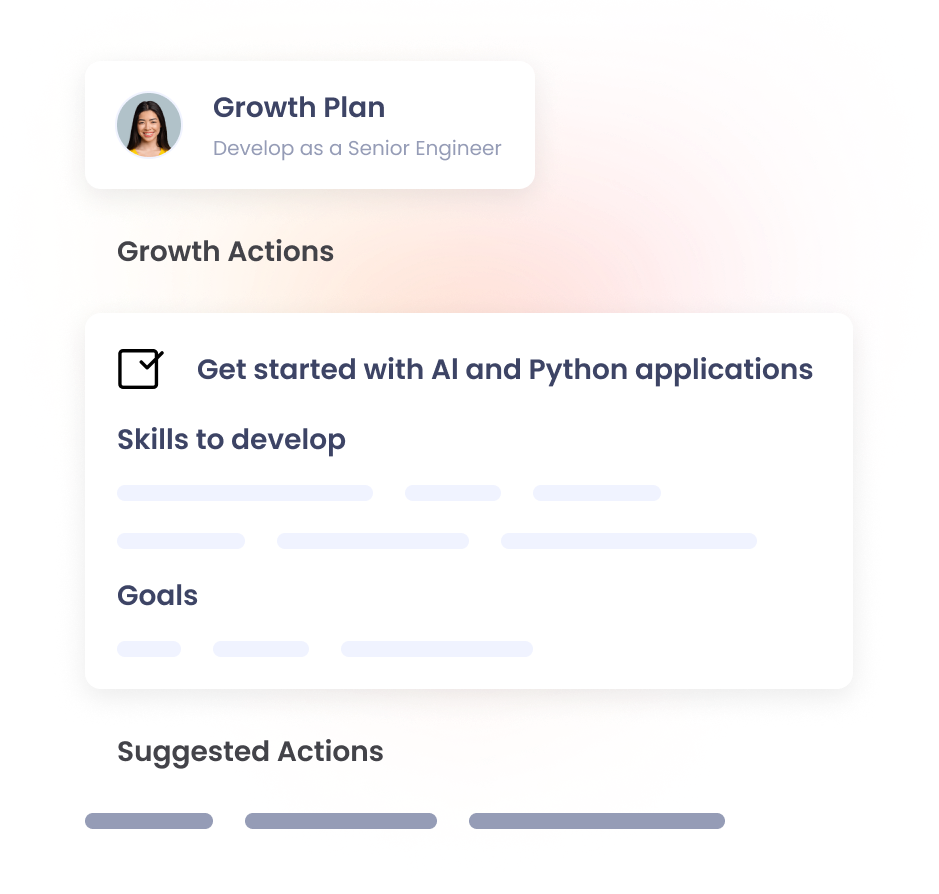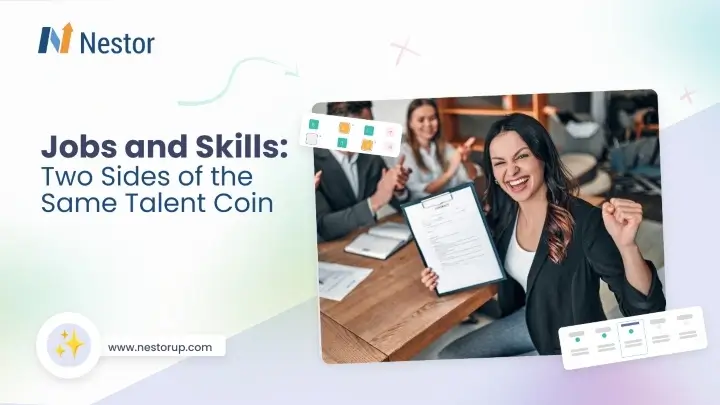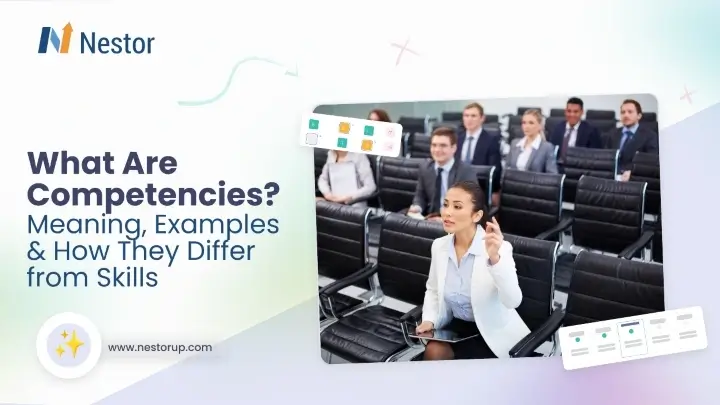
Contents
In the race for market leadership, companies that fuel their engines with continuous skill development are the ones that lead the pack. Skills are the currency of the modern workforce, and skill-building is the process through which employees acquire, refine, and perfect these invaluable assets.
For companies, skills building is more than just a strategy—it’s about ensuring long-term viability and success.
94% of employees would stay at a company longer if it invested in their career development.
— LinkedIn Report
Moreover, employees acquire 70% of their skills on the job and just 10% through formal training, underscoring the importance of creating a workplace environment that fosters continuous learning and practical experience.
Take Google, for example—a company synonymous with innovation and excellence. Google has long been recognized for its commitment to employee development. The company offers a wide range of learning opportunities through its internal program, “Google University,” which includes classes on topics such as management, coding, public speaking, and data analysis. This dedication to skills building not only boosts employee satisfaction but also drives the company’s cutting-edge advancements and market leadership.
In a world where change is the only constant, prioritizing employee skill development emerges as an essential initiative for companies aspiring to thrive. So, as you stand on the brink of potential, prepared to influence the trajectory of your business, it’s imperative to ask: Are you providing your workforce with the necessary tools to navigate the challenges of tomorrow?
The Importance of Skill-Building for Organizations
In the relentless pursuit of progress, the phrase “adapt or perish” has never rung truer. Organizations often face a paradox: the faster they advance, the wider their skills gap can become. This gap represents the disparity between the skills employers need and the skills workers possess. A report by the World Economic Forum highlights that 40% of core skills required to perform existing jobs are expected to change by 2025 and 50% of all employees will need reskilling. The urgency is palpable, and the solution lies in a robust commitment to skill-building within organizations. However, this is just one aspect of why skill-building is crucial. Here’s why skill-building should be a strategic priority:
- Enhanced Employee Performance: Continuous skill development directly improves employee productivity and efficiency. Employees who are equipped with the latest skills can perform their tasks more effectively, leading to higher quality work and better overall performance. For example, Amazon’s Career Choice program funds education for hourly employees, enabling them to gain in-demand skills and advance their careers. This initiative helps bridge skills gaps and enhances employee performance, demonstrating the impact of strategic skill-building on organizational success.
- Innovation and Growth: A workforce that is continually learning and evolving is better positioned to drive innovation. Skill-building fosters creative thinking and the development of new solutions, leading to the creation of groundbreaking products and services. Encouraging continuous learning within the organization cultivates an environment where employees are motivated to explore new ideas and approaches. This culture of innovation not only helps in staying ahead of market trends but also contributes to overall business growth, ensuring the company remains competitive and adaptive to changing industry landscapes.
- Adaptability and Resilience: In a rapidly changing business environment, adaptability is key. Organizations that invest in skill-building are more agile and can quickly pivot in response to new challenges and opportunities. This adaptability ensures resilience against market disruptions and technological advancements. For instance, during the COVID-19 pandemic, companies that had invested in digital skills were able to transition to remote work more smoothly, maintaining productivity and business continuity.
- Employee Retention and Satisfaction: Offering opportunities for professional development is crucial for employee retention and satisfaction. In today’s competitive job market, skilled professionals actively seek out employers who offer robust learning and growth prospects. By prioritizing employee development, organizations not only attract top-tier talent but also foster a culture of continuous learning and innovation.
Additionally, a comprehensive study conducted by Deloitte highlights the correlation between employee satisfaction and organizational commitment. Employees who perceive their employers as invested in their development are more likely to exhibit higher levels of loyalty and dedication to the company’s mission and objectives. This heightened sense of commitment translates into lower turnover rates, as employees are more inclined to stay with an organization that invests in their long-term success. - Leadership Development: Effective skill-building programs also focus on developing future leaders. By providing leadership training and mentoring, organizations can cultivate a pipeline of capable leaders who are ready to take on greater responsibilities. This not only ensures smooth succession planning but also fosters a culture of strong leadership within the organization. Microsoft’s mentorship programs, for example, have been instrumental in nurturing talent and driving leadership excellence.
Strategies for Effective Skill-Building
In the relentless pursuit of organizational success, one indispensable weapon stands out above all: effective skill-building strategies. It’s not merely about equipping employees with knowledge; it’s about sculpting a workforce that embodies excellence, resilience, and adaptability. By conducting a skills assessment, developing a learning culture, investing in training programs, creating individual development plans, implementing non-traditional initiatives, and measuring training effectiveness, organizations can build a robust and adaptable workforce.
1. Setting Objectives:
Setting clear and measurable objectives is the first step in any skill-building initiative. Organizations should align skill development goals with broader strategic objectives to ensure relevance and impact. Clear objectives provide direction and motivation for skill development efforts, guiding individuals and teams towards tangible outcomes that contribute to organizational success. By articulating specific goals, organizations can effectively channel resources and efforts towards areas of priority, maximizing the return on investment in skill-building initiatives.
For example, a technology company aiming to expand its market presence may set objectives focused on enhancing sales and customer relationship management skills among its workforce. By linking skill development initiatives directly to strategic goals, organizations ensure that efforts are purposeful and contribute to overall business success.
2. Skills Assessment:
Conducting comprehensive skills assessments is essential for identifying existing strengths and areas for improvement. Through assessments such as self-assessments, peer evaluations, and manager assessments, individuals and organizations can gain valuable insights into current skill levels and competency gaps. This data-driven approach enables targeted skill-building efforts tailored to individual needs and organizational priorities.
3. Personalized Training Programs:
Personalized Training Programs have become essential in today’s diverse workforce, recognizing the unique needs and preferences of employees. Organizations can now seamlessly integrate skills-based platforms with Learning Management Systems (LMS) and adaptive learning platforms to enhance talent development strategies and uncover tailored learning resources aimed at helping employees bridge their skill gaps.
Nestor, a cutting-edge Skills-based talent management platform, spearheads this evolution. Leveraging Nestor’s advanced AI-driven capabilities, organizations garner unparalleled insights into their workforce’s skills landscape. With a market library boasting over 20,000 skills, augmented by Nestor’s AI suggestions, HR and business leaders can pinpoint skill gaps and growth opportunities within their teams with precision.
Furthermore, Nestor’s AI Suggestions furnish personalized recommendations for skills development, aligning learning initiatives with both individual career aspirations and organizational goals. In fact, a study by Brandon Hall Group found that 93% of the surveyed companies strongly believe that personalized learning helps improve organizational performance and individual performance. By harnessing the prowess of Nestor, organizations can proactively address skill gaps, cultivate a culture of continual learning, and outpace competitors in an ever-evolving business terrain.
In essence, a skills-based talent platform like Nestor enables learning and development efforts to be precisely directed where they’re most needed, ensuring that training initiatives yield optimal results. By embracing personalized approaches, organizations can boost employee engagement, efficiency, and growth, ultimately driving long-term success.
4. Non-traditional Initiatives:
- Cross-Collaboration Initiatives: Encouraging cross-collaboration across departments and teams fosters the exchange of knowledge and expertise. By creating opportunities for employees to work on cross-functional projects or participate in inter-departmental initiatives, organizations facilitate skill-sharing and promote a culture of continuous learning and innovation.
- Mentorship and Coaching: Pairing employees with experienced mentors or coaches provides valuable guidance and support in skill development. Mentors can offer insights, advice, and practical tips based on their own experiences, helping mentees navigate challenges, overcome obstacles, and accelerate their professional growth.
- Job Rotation and Shadowing: Job rotation and shadowing programs enable employees to gain exposure to different roles and responsibilities within the organization. By experiencing diverse job functions firsthand, employees broaden their skill sets, deepen their understanding of the business, and develop a holistic perspective that enhances their effectiveness and versatility.
- Project-Based Learning: Engaging employees in project-based learning initiatives allows them to apply theoretical knowledge to real-world scenarios. By working on projects that align with organizational goals and objectives, employees develop practical skills, problem-solving abilities, and collaboration skills while delivering tangible results that contribute to business success.
Nestor, with its robust skills-based talent management platform, is uniquely positioned to facilitate each of these initiatives. By leveraging Nestor’s platform, organizations can facilitate cross-collaboration initiatives by intelligently matching individuals with complementary skills for collaborative projects. Mentorship and coaching programs are enriched by Nestor’s insights, enabling more targeted pairings based on specific skill development needs. Job rotation and shadowing initiatives are streamlined as Nestor provides dynamic mapping of employees’ skills, allowing for more informed placement decisions and personalized development paths.
Nestor’s Talent and Opportunity Marketplace further enhances these initiatives by facilitating connections between talent and relevant opportunities such as gigs, projects, or new open roles. Powered by AI smart-matching, this feature ensures that individuals with the right skills are matched with the right opportunities at the right time, fostering a culture of continuous learning, growth, and professional development within the organization.
5. Develop a Learning Culture:
Cultivating a culture that values and promotes continuous learning is essential for skill-building. At the heart of this culture lies the imperative to instill a profound appreciation for lifelong learning among employees. Encouraging individuals to embark on a continuous journey of self-improvement and professional development is paramount. This can take shape through various avenues, including structured training programs, providing access to resources, mentorship opportunities, and platforms for knowledge sharing, informal learning opportunities, and self-directed initiatives.
Moreover, integrating learning goals into employee development plans serves as a tangible manifestation of the organization’s commitment to nurturing talent. By aligning individual development objectives with broader organizational goals, employees are incentivized to invest in their growth, knowing that their efforts contribute to the collective advancement of the company. Recognizing and rewarding learning achievements further reinforces the value placed on continuous improvement within the organization. Whether through accolades, promotions, or tangible incentives, acknowledging the dedication and progress of employees sends a powerful message about the importance of learning in driving individual and organizational success.
6. Feedback and Reflection:
Regular feedback and reflection are integral parts of the skill-building process. Providing constructive feedback, both from peers and supervisors, helps individuals identify areas for improvement and track progress towards skill development goals. Additionally, encouraging self-reflection allows individuals to assess their own strengths and weaknesses, identify learning opportunities, and set realistic development objectives. By incorporating feedback mechanisms into skill-building initiatives, organizations can facilitate continuous improvement and optimize learning outcomes.
7. Create Individual Development Plans:
Individual development plans (IDPs) serve as roadmaps for personal and professional growth. Collaboratively developed between employees and their managers, IDPs outline specific skill development goals, action steps, and timelines. By outlining clear objectives, identifying relevant training opportunities, and establishing accountability measures, IDPs empower employees to take ownership of their development journey. Regular reviews and updates ensure that IDPs remain relevant and aligned with evolving career aspirations and organizational needs.
With a platform like Nestor, organizations can streamline the process of creating, tracking, and optimizing individual development plans. Nestor provides full visibility of employees’ development and how their skills and capabilities have varied over time. By leveraging Nestor’s insights, managers and employees can easily set up objectives for development, invite contributors to help reach these objectives, and monitor progress in real-time.
Nestor’s platform facilitates collaboration between employees and managers, allowing for transparent communication and alignment of development goals with both personal aspirations and organizational objectives. Moreover, Nestor enables organizations to directly link individual development plans to key results and company goals, ensuring that employee growth contributes directly to overall business success. This integrated approach fosters a culture of continuous learning and development, driving employee engagement, retention, and organizational performance.
Future Trends in Organizational Skill-Building
Wondering how organizations can adapt to the ever-changing business environment? The key lies in embracing innovative approaches to skill-building. Emerging trends are revolutionizing the learning experience for employees, offering greater engagement, efficacy, and personalization. Below are some of the most promising trends shaping the future of organizational skill development.
Personalized Learning – AI
Artificial Intelligence (AI) is revolutionizing personalized learning by tailoring educational experiences to individual needs and preferences. AI-powered platforms analyze an employee’s strengths, weaknesses, learning styles, and career goals to create customized learning pathways. This ensures that each employee receives the most relevant and effective training.
For example, AI can recommend specific courses or modules based on an employee’s past performance and learning progress. This not only enhances learning efficiency but also keeps employees engaged by providing content that directly addresses their unique needs. Additionally, AI-driven analytics can predict future skill requirements, helping organizations proactively address skills gaps before they become critical issues.
Gamification
Gamification incorporates game design elements into learning environments to increase engagement and motivation. By integrating features such as points, badges, leaderboards, and challenges, organizations can make skill-building more interactive and enjoyable.
Research has shown that gamified training can significantly improve learning outcomes and retention rates. For instance, a study by TalentLMS found that 83% of employees who received gamified training felt more motivated. Gamification not only makes learning fun but also fosters a competitive spirit and encourages continuous improvement.
Virtual and Augmented Reality
Virtual Reality (VR) and Augmented Reality (AR) are transforming skill-building by providing immersive and experiential learning opportunities. These technologies enable employees to practice skills in realistic, risk-free environments, which can be particularly beneficial for complex or hazardous tasks.
VR simulations allow employees to engage in lifelike scenarios, enhancing their ability to apply knowledge in real-world situations. For example, VR is used in medical training to simulate surgeries, providing hands-on experience without the associated risks. AR, on the other hand, can overlay digital information onto the physical world, aiding tasks such as equipment maintenance or customer service.
These immersive technologies not only improve learning outcomes but also cater to different learning styles, making training more accessible and effective.
Microlearning
Microlearning breaks down complex information into small, digestible chunks, making it easier for employees to absorb and retain knowledge. These short, focused learning modules typically last between 3 to 10 minutes and can be accessed on-demand, allowing employees to learn at their own pace and convenience.
This approach is particularly effective for just-in-time learning, where employees need to quickly acquire specific skills or knowledge to perform a task. Microlearning is often delivered via mobile devices, enabling employees to learn on the go and integrate training into their daily routines.
Research indicates that microlearning can significantly improve retention rates compared to traditional training methods. Software Advice reports that almost 60% of employees show a preference for their organization’s learning platform when it offers shorter courses. They noted that longer modules present challenges in absorption and impede daily operations.
Final Thoughts
As organizations navigate the ever-shifting tides of the business world, one truth remains constant: the imperative of continuous skill development. As businesses navigate the currents of change, the mandate for continuous growth becomes increasingly apparent. Skills aren’t mere tools; they’re the cornerstone upon which success is built.
From personalized learning powered by AI to immersive experiences through VR and AR, the future of skill-building is brimming with promise. By embracing these emerging trends and reimagining traditional approaches, organizations can forge ahead with confidence, secure in the knowledge that their greatest asset—their people—is continually evolving and growing.










